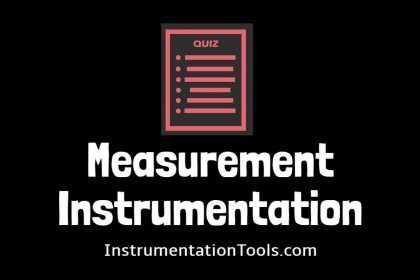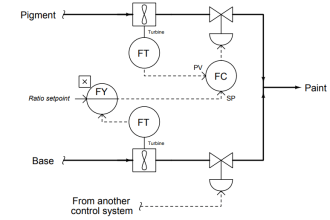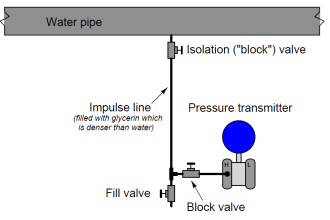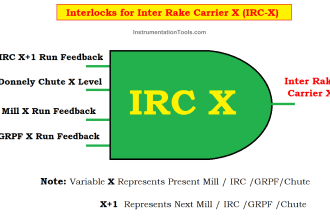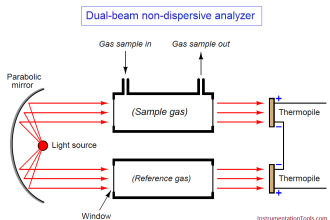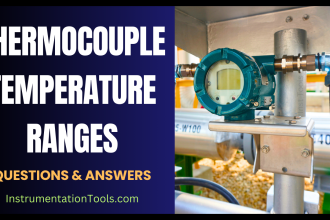Quadrupole Mass Spectrometer
1. Which of the following is not a feature of quadrupole mass spectrometer?
a) Low cost
b) Light weight
c) Low speed electronic scanning
d) Simple in construction
Answer: c
Explanation: In quadrupole mass spectrometer, electronic scanning takes place. The scanning takes place in high speed.
2. Which of the following is not a component of quadrupole mass filter?
a) Electrodes
b) Choke
c) DC potential
d) Detector
Answer: d
Explanation: Detector is not a part of the filter. The filter uses DC potential.
3. The mass selection scheme uses a dc potential and not a radio frequency potential.
a) True
b) False
Answer: b
Explanation: The mass selection scheme uses a dc potential. It also uses a radio frequency potential.
4. If to one pair of electrodes one potential with one sign is applied, which of the following is applied to the other pair of electrodes?
a) Same potential with same sign
b) Different potential with same sign
c) Different potential with different sign
d) Same potential with different sign
Answer: d
Explanation: If to one pair of electrodes one potential with one sign is applied, same potential with different sign is applied to the opposite electrodes.
5. Which of the following is the heart of quadrupole instrument?
a) Electrodes
b) Choke
c) DC potential
d) Detector
Answer: a
Explanation: Electrodes are the heart of quadrupole instrument. Opposite electrodes are electrically connected.
6. Which of the following has to be done to increase the resolution of the quadrupole mass spectrometer?
a) Increasing distance between detector and reflectron
b) Increasing difference between the individual rf accelerating stages
c) Increasing the length of the drift tube
d) Increasing the rod length of the electrode
Answer: d
Explanation: The resolution depends upon the electrode. The length of the electrode has to be increased for increasing the resolution.
7. Which of the following does not affect resolution of the instrument?
a) Changing length of electrode
b) Changing slope of scan line
c) Quality of machining of the rods
d) Changing length of drift tube
Answer: d
Explantion: Changing length of drift tube does not affect resolution of the instrument. Increase in resolution results in an increase in the number of ions reaching the detector.
8. In cases where a differentiation is required between very similar substances, which of the following techniques making use of quadrupole principle is preferred?
a) Evaporation mass spectrometry
b) Pyrolysis mass spectrometry
c) Plasma mass spectrometry
d) Trapped ion mass spectrometry
Answer: b
Explanation: In cases where a differentiation is required between very similar substances, pyrolysis mass spectrometry is used. The sample is usually solid or involatile liquid in thiscase.
9. In pyrolysis spectrometry heating is done until which of the following is reached?
a) Curie point
b) Boiling point
c) Until production of superheated vapour
d) Until 100oC
Answer: a
Explanation: In pyrolysis spectrometry heating is done until curie point is reached. At this point magnetic permeability drops abruptly.
10. Which of the following is used to cool the ion source?
a) Liquid sodium shield
b) Liquid nitrogen shield
c) Water
d) Freon
Answer: b
Explanation: Liquid nitrogen cooled shield is used to cool the ion source. It reduces source contamination.
11. In quadrupole mass spectrometer, the ratio u/v is mass dependent, where ‘u’ is the DC voltage and ‘v’ is the peak amplitude.
a) True
b) False
Answer: b
Explanation: In quadrupole mass spectrometer, the ratio u/v is mass independent, where ‘u’ is the DC voltage and ‘v’ is the peak amplitude. This ratio is kept constant.
12. When value of q is kept constant, the value of m/e is proportional to which of the following when ‘m’ is the mass number, ‘e’ is the electric charge, ‘u’ is the DC potential, ‘v’ is the peak amplitude and ‘f’ is the frequency?
a) u/v ratio
b) u
c) v
d) f
Answer: c
Explanation: When value of q is kept constant, the value of m/e is proportional to ‘v’. By variation of rf amplitude the m/e ratio varies.
